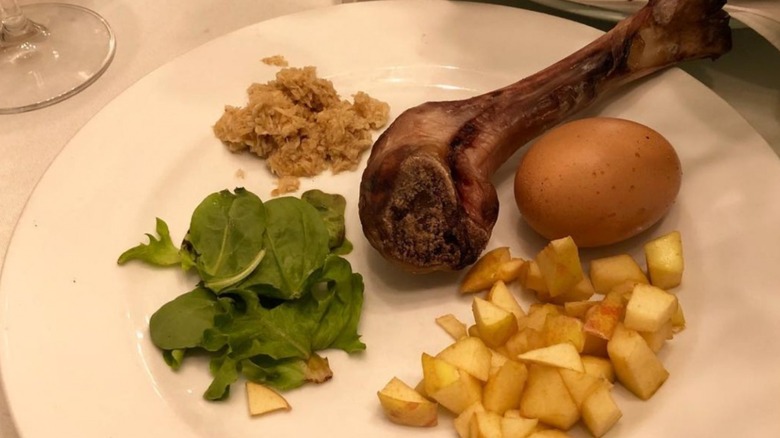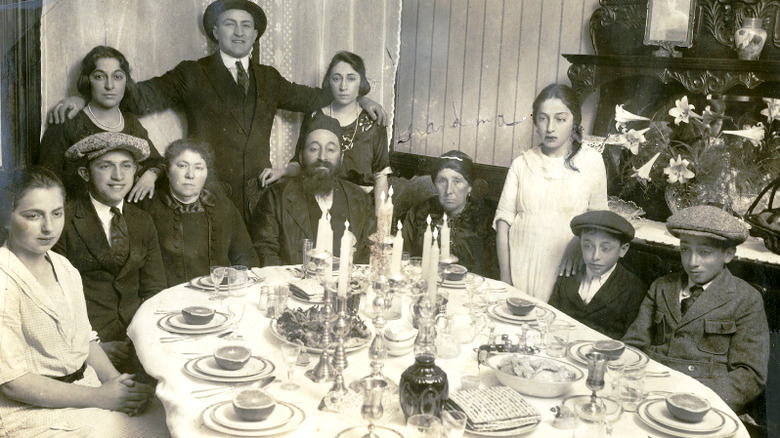What The Bone And Egg Mean On The Seder Plate
In Jewish religion and culture, the Seder is a long and meandering ceremonial dinner that marks the arrival of the Passover holiday. Although everyone at the multigenerational table is encouraged to make themselves comfortable — nay, recline like royalty, as Chabad.org clarifies — the purpose of these proceedings is serious business. The holiday centers around a vivid recounting of the Jewish people's escape from slavery in ancient Egypt (via My Jewish Learning). The story is told in a ritual, albeit playful, fashion, aided by a number of props, most of which are food that is meant to be savored. This includes the unleavened bread known as matzo and the nutty, wine-infused relish known as charoset. Two notable exceptions, however, are the shank bone and the roasted egg that you'll find on the Seder plate.
Neither is meant to be eaten during the Seder, although they are placed alongside the matzo, charoset, bitter herbs, and green vegetables. If you've ever been to a Seder, you may have been struck by the sight of them sitting untouched on the plate while everything around them dwindles, although it has become customary to eat hard-cooked eggs during the Seder dinner, and the bone, the next day, per Rabbi Avi Zakutinksy's blog. So what's this custom all about? Moreover, what do the bone and the egg on the Seder plate even mean?
The bone and the egg are age-old symbols of Passover
The purposes of the bone and the egg on the Seder plate are distinct. The egg is a symbol of mourning in the Jewish religion, its roundness reminiscent of the circle of life, its closed structure reminiscent of the muteness of the Jewish peoples' enemies in the face of divine intervention at the time of the Jewish people's exodus from Egypt, according to Chabad.org. Many people also associate the egg with fertility and spring.
The bone, which must have a bit of meat on it, is meant to symbolize the outstretched arm of the Jewish people's God as they escaped their enslavement (via Chabad.org). It's also a reference to the climax of the Passover story, in which unspeakable suffering was visited upon all Egyptian homes except for those of Jewish families, who had been advised in advance to identify themselves for deliverance by marking their doorposts with the blood of a sacrificial lamb (via History). Vegetarians sometimes substitute a beet for the bone, according to My Jewish Learning.
That being said, the bone and the egg do come together in some interpretations. For example, some theologians believe that together, the bone and the egg satisfy the Talmudic requirement that the Seder include two cooked dishes to symbolize sacrifice, according to TheTorah.com. Others believe they represent Moses and Aaron, the brothers entrusted by their God to deliver their people to freedom.

